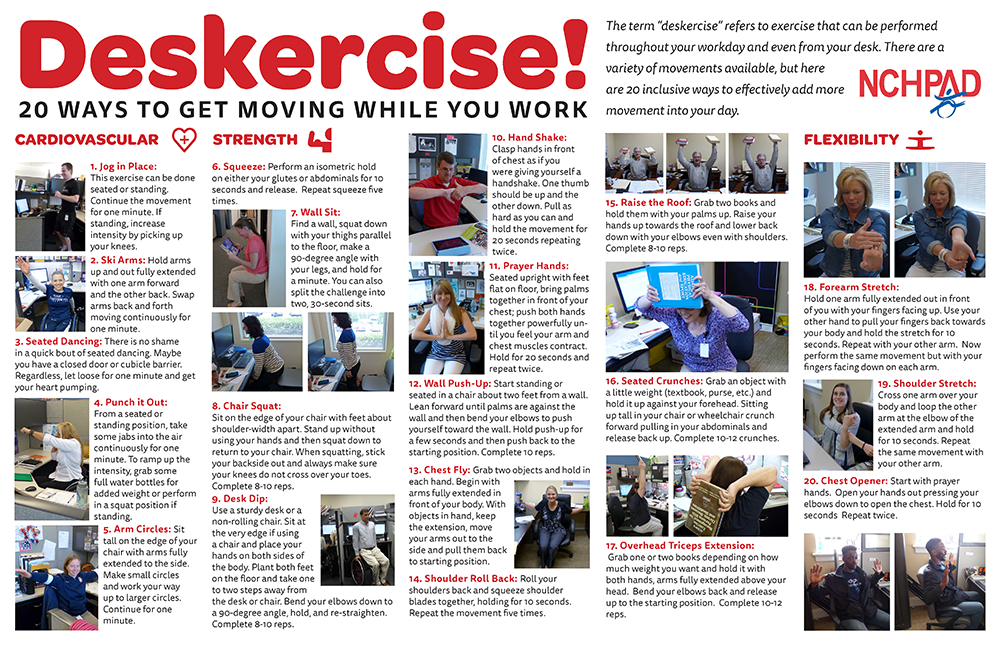By Allison Hoit
The term deskercise refers to exercise that can be performed throughout your workday and even from your desk. There are a variety of movements available, but in this article we will focus on 20 inclusive ways to effectively add more movement into your day.
Health Risks of a Sedentary Lifestyle
Perhaps you hit the gym before or after work for 30 minutes five times a week and you’re wondering, “Why do I need to move more during my workday?” If this is you, kudos for meeting the Physical Activity Guidelines (PAG) recommended amount of physical activity per week – 150 minutes. However, there’s a catch. Research now says that meeting the PAG may not be enough to undo the health risks of a sedentary lifestyle. Sitting for long periods of time during the day is just as detrimental to your health. Prolonged sitting can impair the body’s ability to deposit fat, interrupt the functioning of HDL (the healthy cholesterol), and increase one’s risk for cardiovascular disease and other causes of mortality. See ACSM’s information on reducing sedentary behaviors.
The Solution
Adding short bouts of cardiovascular, strength, and stretching exercises throughout the workday will help reduce sedentary behavior and improve fitness levels.
Some quick tips for adding in activity to your workday:
- Taking a quick walk or push break around the office every time you need a refill on coffee or water
- Instead of emailing your coworker a few offices down, get up and go converse in person
- Pace while on long conference calls
- Have a walking/pushing meeting
- Take the long route to the restroom
- Swap your office chair for a stability ball
The Challenge
Pick a two-week block (10 work days) and challenge yourself to complete 2x2 of the exercises each day. This means you will pick two exercises and perform them twice each throughout your day. Brain bogged down? Set a reminder on your Outlook calendar to do your deskercises. As you begin to feel less stressed and more productive, add in as many exercises during your day as you can. Your co-workers might be wondering why you are doing chair-dips every two hours; you can share this article and challenge with them.
Continue reading to see the 20 Deskercises for Everyone!
Click the link to download the Deskercises Poster for use in your workplace.


